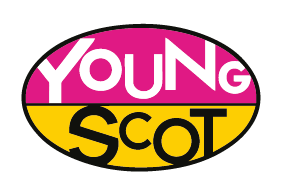Our Impact - Daibhidh Boag
Daibhidh Boag Director of Language Planning and Community Development, Bòrd na Gàidhlig .
As part of our impact report blog series, Daibhidh Boag, Director of Language Planning and Community Development, Bòrd na Gàidhlig talks about Gaelic culture today and how Bòrd na Gàidhlig’s partnership with Young Scot is important in normalising Gaelic in Scotland.
To find out more about Young Scot’s impact please read our Impact Report 2019/20.
Walk or take public transport across our country and Gaelic comes at you from all sides. The landscape - urban, rural, North, South or Central - is alive with the language. When we named the features of the land, we weren’t speaking English.
Language is a living thing, and without enthusiasm and action, all might have been lost. Gaelic could have joined Norn, Old Provencal and Wangerooge Frisian as one of the hundreds of lost European languages.
‘We are, thankfully, beyond the survival stage,’ says Daibhidh Boag, Bòrd na Gàidhlig’s Head of Language Planning and Community Developments. ‘Our focus is now on developing the language and seeing it embedded as part of life and culture in Scotland. The work we do with young people and with Young Scot is central to that aim.’
Languages live because the next generation pick it up. Bòrd na Gáidhlig’s partnership with Young Scot is a key part of part of this work.
‘It’s about making the language part of the mainstream in two ways. We want young Gaelic speakers to feel they are part of the national networks of Young Scot. Producing our own card or webpages for young people would only have signalled that the language was something separate.’
‘But it is also a way of presenting the language to young people who are not speakers and who may be intrigued and be motivated to learn more. It’s important that the language is part of a national resource like Young Scot.’
There is a growing interest in the language, a Gaelic learning app launched last year has over 300,000 subscribers, most from within Scotland. More advanced speakers include the young people who have been or who are being educated at the Gaelic medium primary and secondary schools in Scotland. Being fluent in another language other than English is an obvious advantage. But the fact that bilingual students tend to do better at all the other subjects too, makes this a real success story.
‘The Gaelic secondary school in Glasgow has one of the best attainment records in Scotland,’ says Daibhidh, ‘but we know that schools are only one dimension of education. Lots of learning goes on outside school, which is why the collaboration with Young Scot is so important.’
There are plenty of challenges. The cultural dominance of English has been boosted by social media…the language of TikTok, Twitter and Facebook. But it also means that content in Gaelic stands out.
‘The partnership with Young Scot is part of our mission to normalise the language, to embed it naturally in national life. Young people are a vital part of that. A major proportion of our budget goes to work involving young people. We have a rich heritage in Gaelic, but we have to be resolutely focussed on the future and the next generation of speakers - whether that’s fluent or just enough to know the origins of your hometown’s name.’

